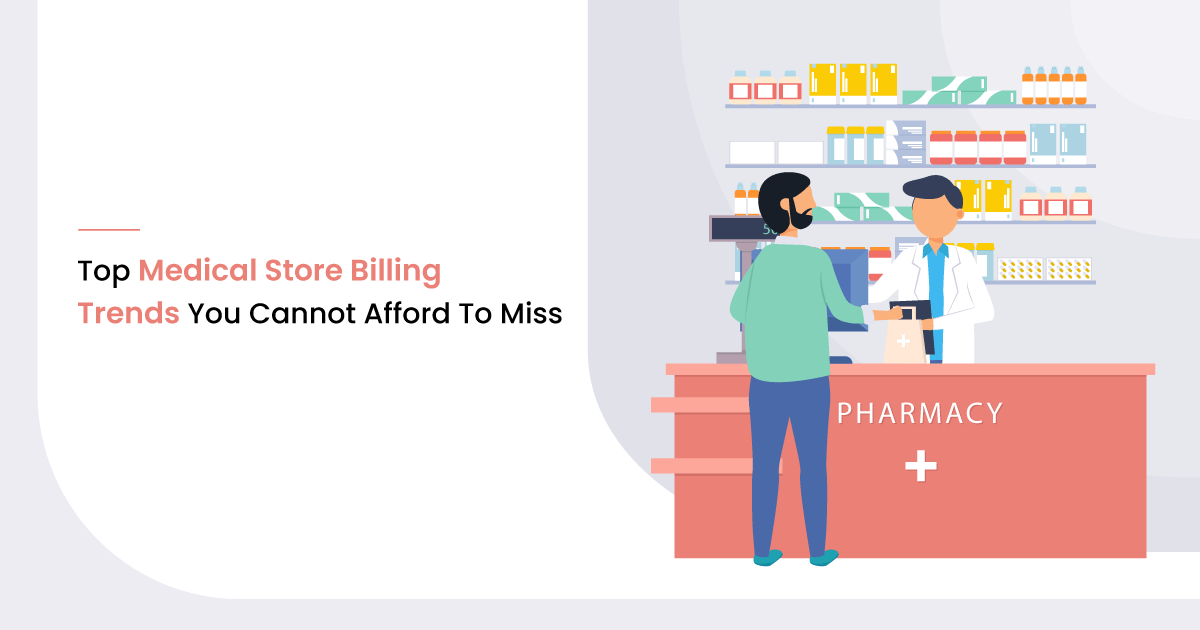60% of Americans would prefer their invoices to be sent exclusively through electronic channels. With a large population more or less confused about their medical billing paperwork, practitioners are making a shift to medical billing software to reduce their loads and serve customers better.
Top Technological Changes In The Medical Industry
Let us have a look at the top technological changes in the medical industry that are paving the way for seamless treatments and services.
1. Billing & Invoicing
While the whole medical billing process seemed large and complicated, it simplified the fast-changing medical industry. Earlier patients had to fill in large forms, and then their name was checked on the records.
Moreover, they also had to provide official identification each time they visited the hospital. Not only this, the billing and invoicing took in a lot of time as they were done manually. Not to mention, if the payer decided to seek insurance, the process was further prolonged.
However, with the advent of medical billing software, the whole process has been simplified. You only need to provide your identification details and no longer need to fill long forms and wait for bills. Moreover, medical billing stores also no longer rely on paper slips and have turned to software for their needs.
As per a Bloomberg report,
“For doctors’ offices that support 5 or fewer practitioners, the primary collection challenge for medical billing is the slow payment which comes from patients who are on high-deductible health insurance plans.”
Once you are done with your treatment, you can choose to pay a portion of the services on claims and then pay the rest of the amount. Not only have these changes helped patients, but they have also helped billers generate accurate medical bills and follow up with patients whose bill payments have been delayed.
Moreover, they can easily maintain patient records and confirm their details easily. Billers can also choose to contact patients directly, send follow-up bills, and enlist a collection agency in case of non-payment.
2. Automated Medical Billing
Paper claims have become a thing of the past. Today, medical billing is handled on the web or using cloud-based software. Automated medical billing reduces the risk of error in insurance claims processing by flagging potential errors in advance. This allows billers to resolve issues proactively and minimize payment delays and denial.
83% of the medical billing industry firms say that they will create retail-like solutions and practices to help everyone understand and track their total costs of care.
Web-based systems can be accessed by billers, healthcare providers, and medical stores from anywhere, which explains why outsourced medical billing services are so popular. However, using technology to send and receive insurance claims is not error-proof.
Medical stores and billers need to be proficient in using advanced medical billing technology. This will save time and money for all parties involved. As their role evolves, medical billers must master the art of medical billing collections and clear all outstanding patient accounts faster.
3. Barcode Labels
Barcode labels or barcode solutions help streamline the patient admittance process, track medication and care admission, and identify patients throughout their entire stay. They are created at the point of admission, and specific patient information is updated as per the patient’s needs.
For example, a nurse can use a mobile printer to create a barcode wristband for the patient. Each time a medication is given, the doctor can scan the barcode on the medication to record it in the patient’s medical record.
This ensures that the correct treatment is given to and to the right patient. Thus, ensuring patient safety and reducing errors. Moreover, barcode solutions are also essential for workflow changes in pharma stores and the medical industry.
With barcode technology, practitioners can see all the previous notes and medical information tied to the unique barcode. Not only this, the medical staff can easily access records and see where the patient is in terms of his/her medication cycle and other care that a patient may require.
Furthermore, it reduces doctors’ and nurses’ labor and can help the hospital save time and resources. As more and more healthcare practitioners convert to electronic medical records, it will help eliminate manual data collection and allow all patient information to be easily collected and recorded electronically.
4. On-Demand Healthcare & Sales Maintenance
With the medical industry entering the digital innovation era, patients are seeking on-demand healthcare because of their busy schedules. Now, you can book an appointment with your mobile phone.
With many healthcare providers building their apps, it is now easier for physicians to provide on-demand healthcare to clients in specific circumstances. Doctors have now become on-demand healthcare providers to keep up with their patients’ rising needs.
Not only doctors but medical stores are also providing on-demand services. You can choose to order medicines with a single click and get prescriptions as well.
However, managing all this data can get tedious. Here is where medical billing software comes in handy; all you need to do is add the data once, and you can update data with the help of barcodes and other tools.
Top 5 Medical Store Software
Here is the list of top 5 medical store software-
1. Medicine ERP
Medicine ERP is leading medical billing software that has helped several pharmacists streamline their day to day business operations. It helps pharmaceutical companies get complete visibility of the supply chain and supports their business growth.
2. Horizon ERP
Horizon ERP boasts of a rich set of inventory management and accounting features. The platform simplifies and speeds up back-end business processes and enables companies to perform tasks at an optimum level with minimal support. Moreover, the software also combines core billing capabilities for GST (goods and services tax), distribution, and retail businesses.
3. Ecogreen
A web-based pharma retail business chain management software, Ecogreen is ideal for single and multi-store owners. You can use it to maintain ledgers, balance sheets, and keep track of journal vouchers, supplier payments, and customer receipts. The software can also handle retail chain business operations, sales returns, and stock transfers.
4. Acme Insight
Acme Insight software enables medical retailers to handle multiple customers and suppliers in the shortest time. It also helps medicine retailers increase profits by allowing them to have tight control over the medicine stock available in the shop.
5. Digihealth
An advanced healthcare and pharmacy management system, Digihealth allows practitioners to practice medicine in an improved and innovative manner. The software’s key features include stock management, accounting, CRM & sales dashboards, and inventory management.
These medical industry developments have led to a myriad of changes in the billing and invoicing process. Moreover, it has led to a huge reduction in manual labor.
Did we miss out on any key aspect? Let us know in the comments section below!
Originally published October 23, 2020 , Updated : October 23, 2020
Need Any Technology Assistance? Call Pursho @ 0731-6725516




